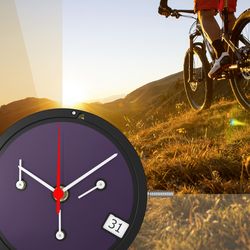The Solartech Chronos are out! Discover their advantages.
What is the difference between a mechanical and an automatic movement?
An automatic movement is a mechanical movement with self-winding; the spring of the movement is wound by an oscillating weight – an unbalanced rotor – using the kinetic energy of the wearer moving his arm.
While a mechanical movement without automatic is always wound by hand using the crown, the automatic movement is wound by the natural movements of the wearer's wrist. A metal mass – rotor – which is free to move, rotates with the movement of the wrist and winds the spring. The automatic movement then stores the energy in the spring and uses it to control the movement of the hands. As the spring is constantly tightened, an automatic movement offers a more uniform run rate compared to a mechanical movement with hand or manual winding.
All mechanical movements require a certain amount of care and maintenance to ensure that they function correctly and tell the time as accurately as possible.
How does a Ronda mechanical movement work?
The automatic movement uses the natural movement of the wrist to wind the mainspring via the oscillating weight. A certain wearing time is required for the watch to run without interruption. Once it has stopped, the watch is manually restarted by turning the crown.

![[Translate to English:] Uhruh des mechanischen Kalibers R150](/fileadmin/_processed_/0/2/csm_Makro_Spirale-002_276e849bf1.jpg)
